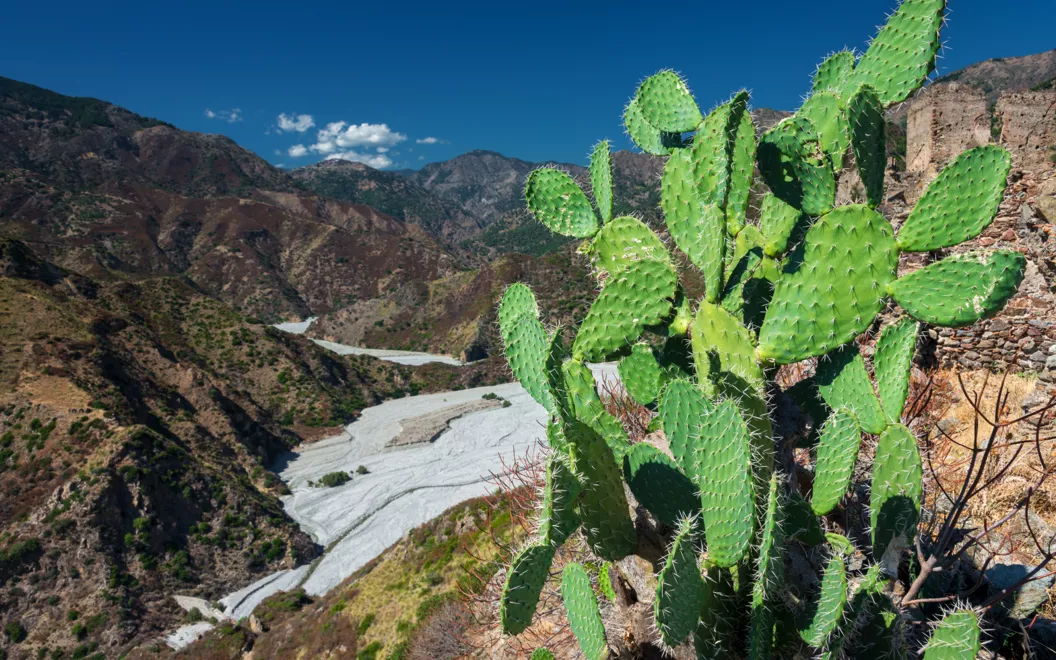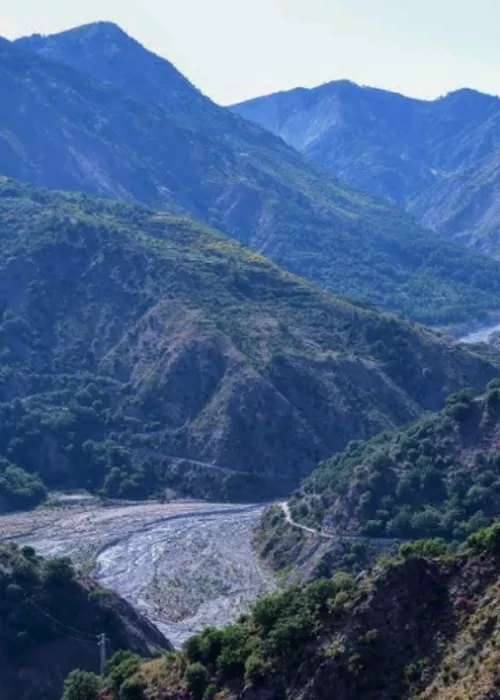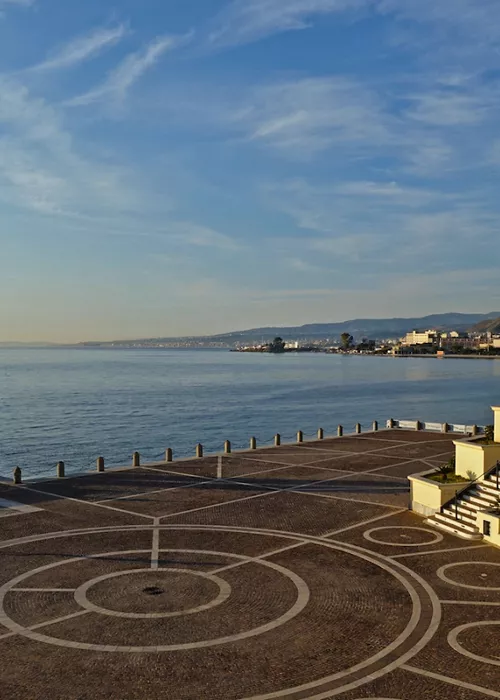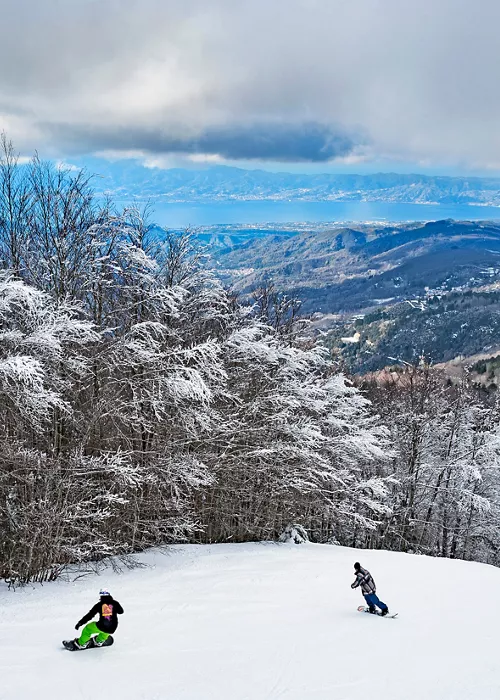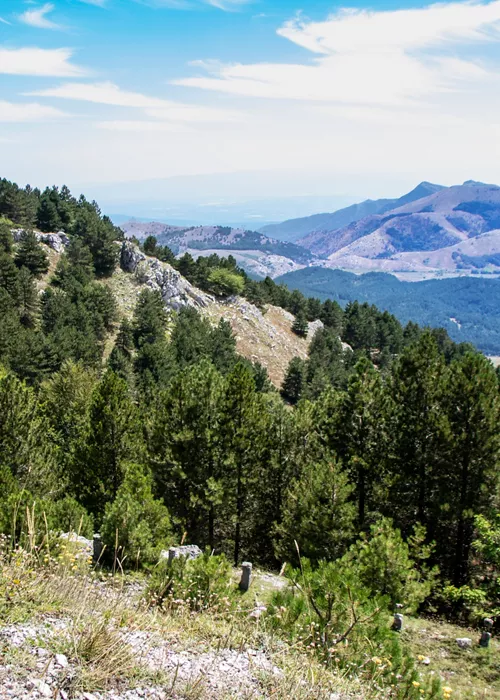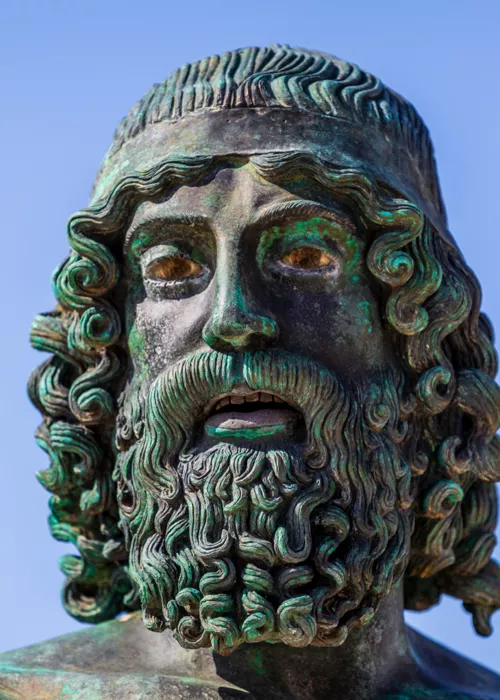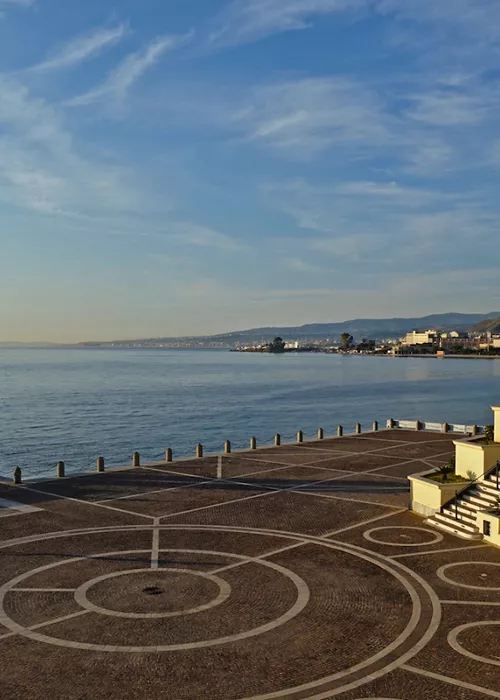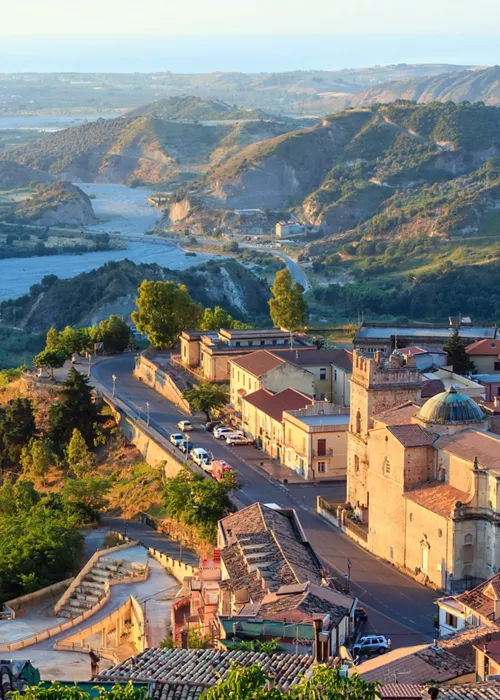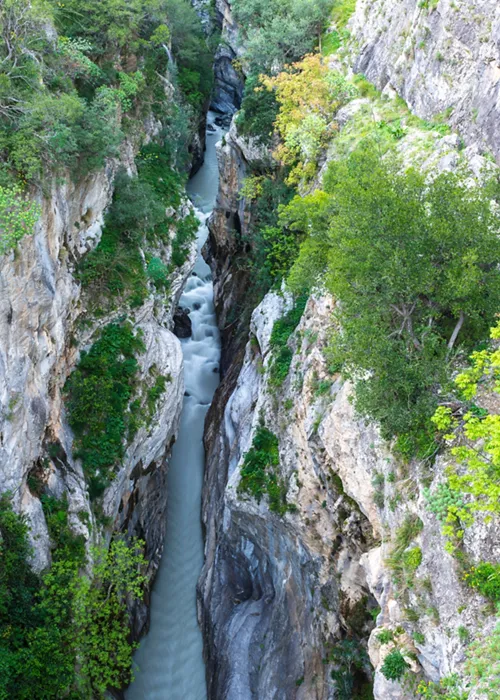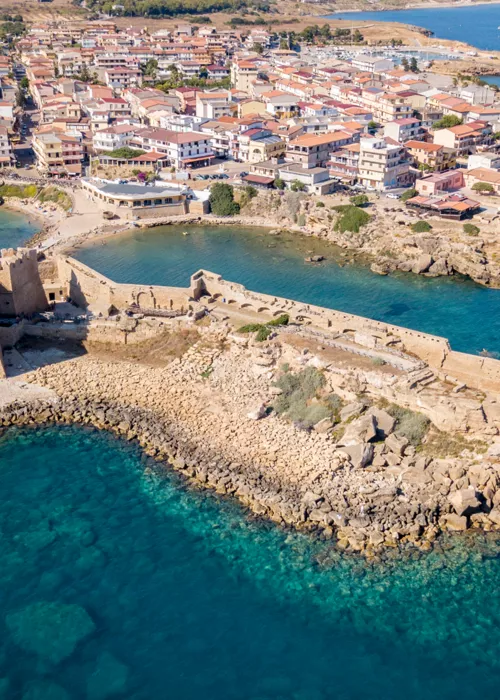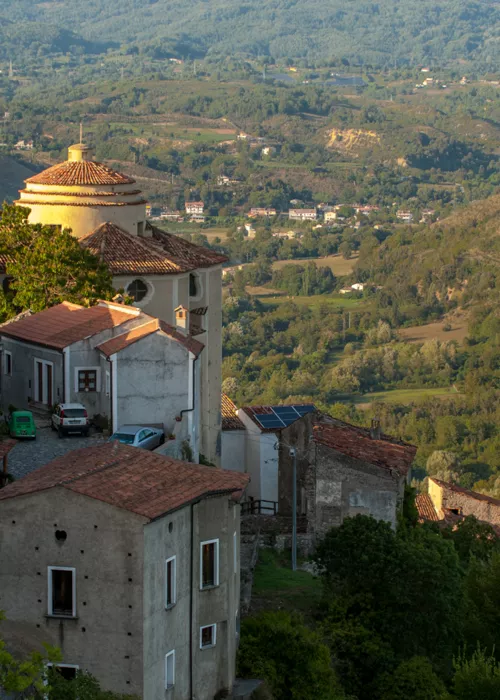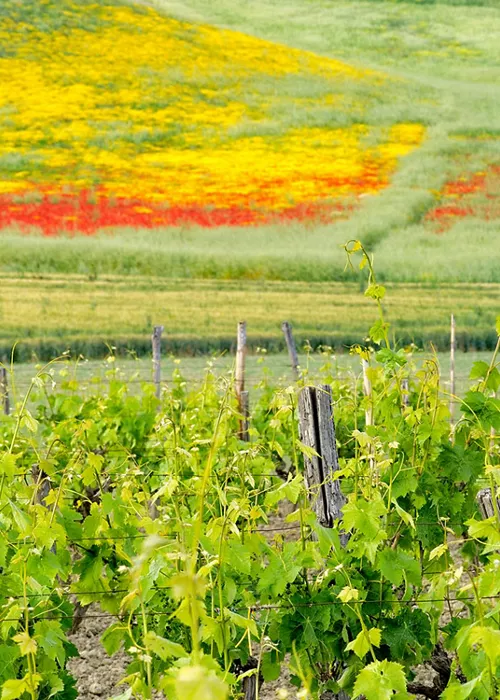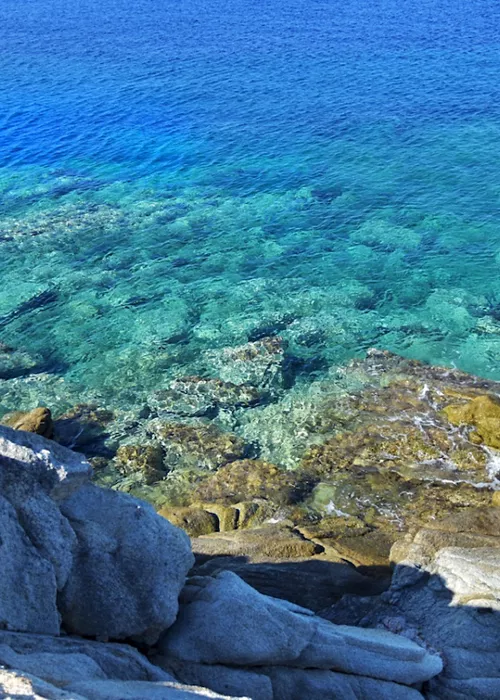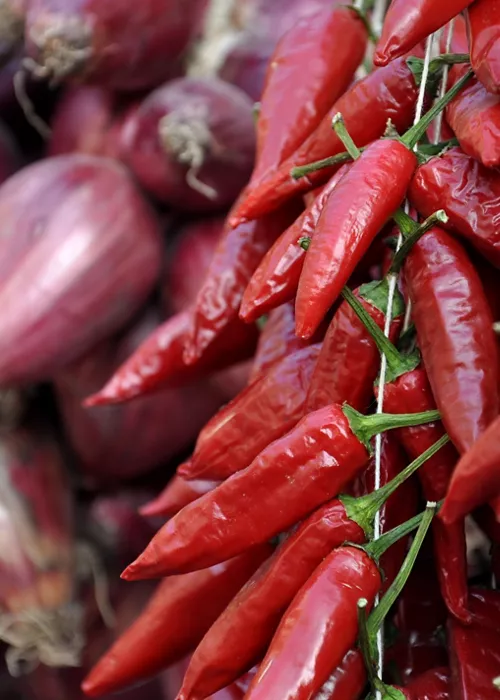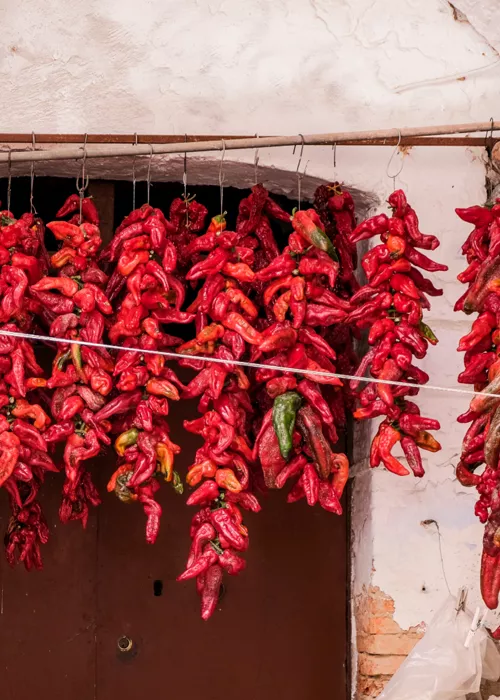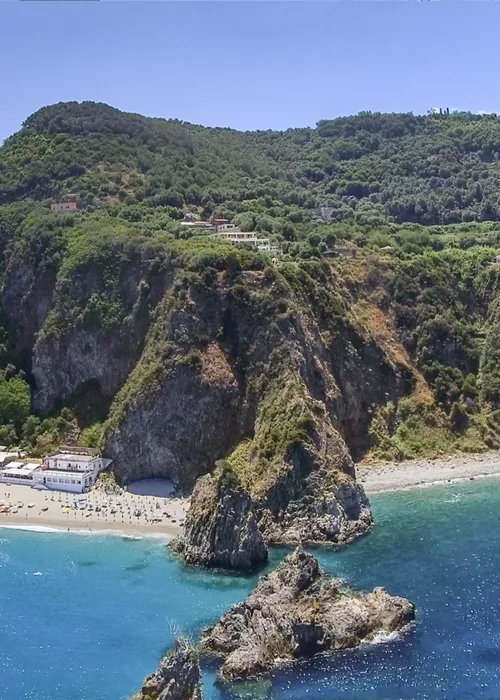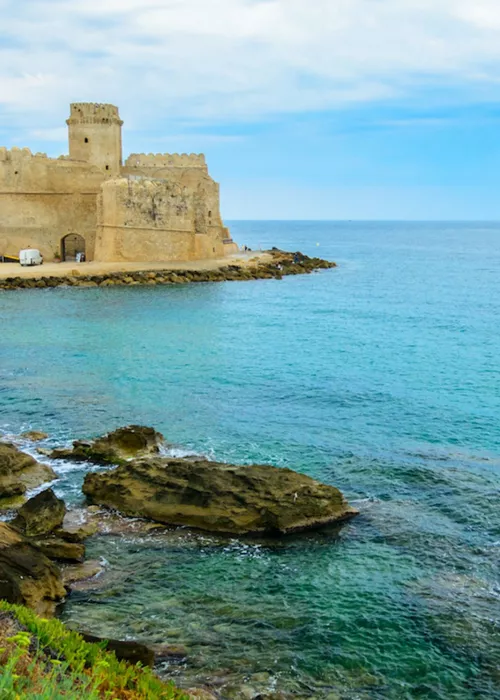Aspromonte National Park
5 minutes
Rich in natural beauty, valleys, waterfalls, small villages and breathtaking landscapes that combine sea and mountains, Aspromonte National Park is a must-see destination in Italy. A land of ancient history, rich in culture and traditions handed down through the generations, the park has a wide, characteristic tourist offer to discover.
The Park
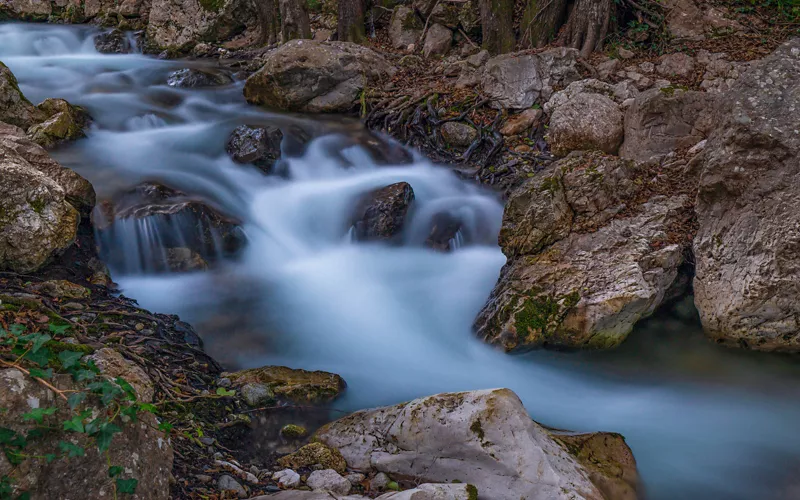
Located in the south of the peninsula and, due to its geographical position that is truly Mediterranean, it enjoys a wealth of flora that includes more than 1,500 plant species as well as a wide variety of fauna with mammals, reptiles, amphibians and invertebrates. Since 2021, it has been part of the Global Geoparks Network curated by UNESCO. It offers trekking and cycle paths, walking tours in unspoiled nature and relaxing moments in the green areas dedicated to picnicking; Aspromonte really has so many opportunities for those who want to get in touch with nature. There are villages and historical monuments to see, typical produce and cultural traditions to find out about.
Itineraries
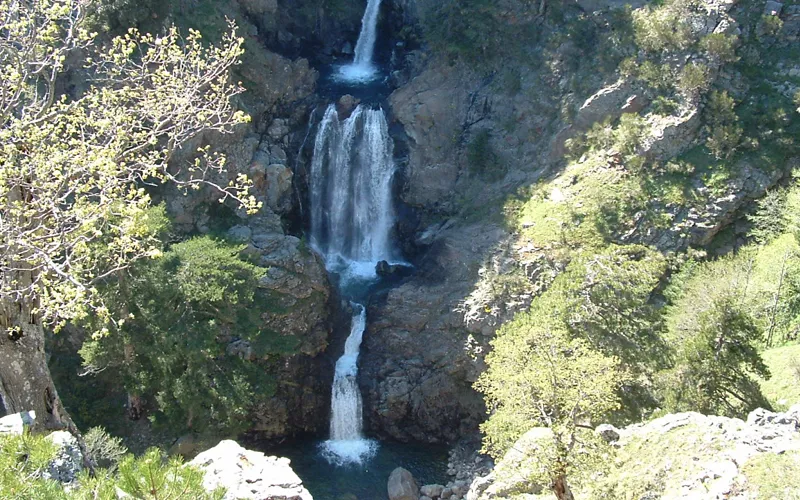
There are 11 paths radiating across the Aspromonte area, each one with its own duration and difficulty. The path that runs from Samo to Montalto is the longest at 26.11 km. Recommended for the more experienced, it requires 7.5 hours of walking, but you can plan some stops along the way, ideally in Monte Iofri and Canovai. The park also has some easier excursions, such as the trail leading to the Amendolea Falls also known as Maesano Falls. It is 1.977 km long, requiring about 35 minutes walk, and it is immersed in nature, reaching its peak when you arrive at the waterfalls with its cascades that plunge into the valley.
Equally interesting are the 19 themed routes that combine nature and culture, such as the high-altitude Gambarie - Polsi route that leads to the Sanctuary of the Madonna dei Polsi. Or the San Luca - Zervò themed path that starts from the birthplace of the writer Corrado Alvaro, passes through the village of San Luca, and reaches Pietra Cappa, the largest monolith in Europe. It then passes through the Valley of the Great Stones and arrives in Zervò and the former Sanatorium Vittorio Emanuele III dating back to 1929. For great walkers, there is The Englishman's Path, a journey in 7 stages that discovers Greek Calabria inspired by the English landscape architect Edward Lear, who decided to explore the lands of the Kingdom of the two Sicilies in the 1800s.
Sports in the area

Cycling deserves a special mention. Among splendid panoramic landscapes and a wild nature, Aspromonte offers cycling lovers the last three stages of the Ciclovia dei Parchi della Calabria. Over the course of its 545 km, it takes in Aspromonte National Park with the Fabrizia - Canolo, Canolo - Gambarie, Gambarie - Reggio Calabria routes. The cycling route passes through some of the most characteristic points of interest in this area, from Pietra Cappa to the Mundu and Galasia waterfalls, to the Serra where Garibaldi was wounded by Piedmontese soldiers, in Reggio Calabria. Alternatively, there are 3 routes available for mountain bike lovers: Nino Martino, Terreni Rossi, Acqua della Face - Montalto, each with its own beauty, landscapes and level of difficulty.
In Gambarie and more specifically in Puntone Scirocco and Punto Nardello, you can ski and snowboard in winter, while in the rest of the area trekking, organized excursions along paths and horseback riding are an option. With a wide range of itineraries and its position and landscape, Aspromonte is an excellent place for canyoning, canoeing, kayaking and canyoning.
Attractions

Aspromonte is also rich in attractions and culture that you can get to know by visiting its villages.
The village of Gallicianò in the Vallata dell'Amendolea is charming. A little treasure in the Grecanica area of the Aspromonte National Park inhabited by only 40 people, it takes its culture and traditions from Magna Grecia, which is why it is possible to hear or find inscriptions in Greek scattered throughout its alleys. Visit the Church of San Giovanni in the main square and the Orthodox Church dedicated to Our Lady of Greece in Byzantine style. It’s worth visiting the village’s ancient water source, also known as the Fountain of Love, where in ancient times the women of the village went to collect water. From the Piccolo Teatro, it is possible to overlook a splendid view over Gallicianò and the Amendolea Valley.
The village of Precacore is perched in a unique panoramic position with a few old houses, small alleyways and two churches: the Church of San Giovanni Battista e that of S. Sebastiano which boasts frescos from the 1500s. The charming village of Roghudi overlooks the river Amendolea. Abandoned following the 1970 flood and totally uninhabited, it is a ghost town nestled in nature, accessible only on foot, preserving ancient memories and a melancholic soul.
The Network of Museums in the Park is a large one, including 18 museums ranging from the artistic sector, like the Park Museum Santa Barbara - MUSABA, to the naturalistic such as the Civic Museum of Natural History with its exhibition of stones, rocks, fossils and minerals, as well as the archaeological sector, like the Archaeological Museum of the Amendolea Valley.
Fine food and wine

From cold cuts and cheeses, to pasta and bread made of wheat and baked in a wood-fired oven, Aspromonte also has its local food and wine production. Musulupa is a typical local unsalted cheese which is formed in anthropomorphic, extravagantly-shaped wooden molds and consumed mainly at Easter time. Other local delicacies are handmade macaroni served with beef, pork or goat meat sauce and also soppressate, nduja, capoccoli, spicy or spiced sausages, but also mushrooms and potatoes. The confectionery tradition continues to produce nougats made of almond paste, sugar and white or black chocolate, very similar to Sicilian confectionery traditions. The Park is home to several structures including mountain huts, farms and small restaurants where you can try all the goodness of the local cuisine.
Hospitality
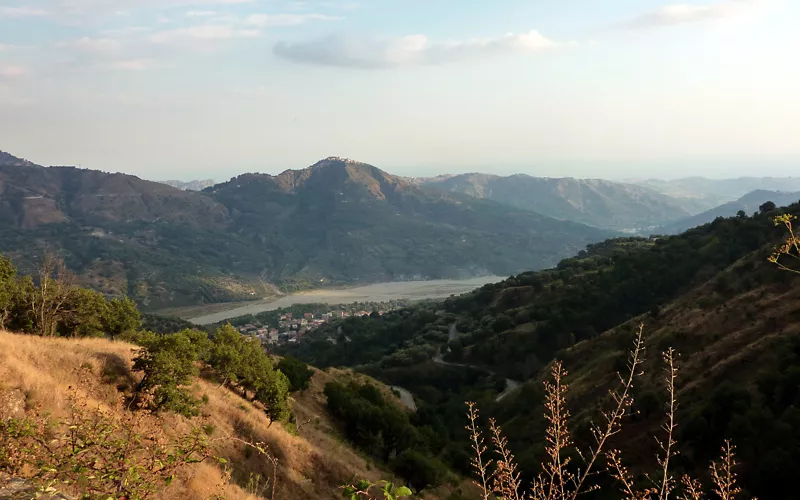
The park's accommodation facilities are well organized offering quality services to visitors. From small B&Bs to lodges and hotels, hospitality is taken care of down to the last detail.
Amenities
Located throughout the territory, the Visitor Centers provide visitors with information on nature, culture, traditions, and activities to enjoy in the park. A variety of hiking associations in the area are an excellent solution for those who want to take part in excursions, trips and activities in contact with nature.

